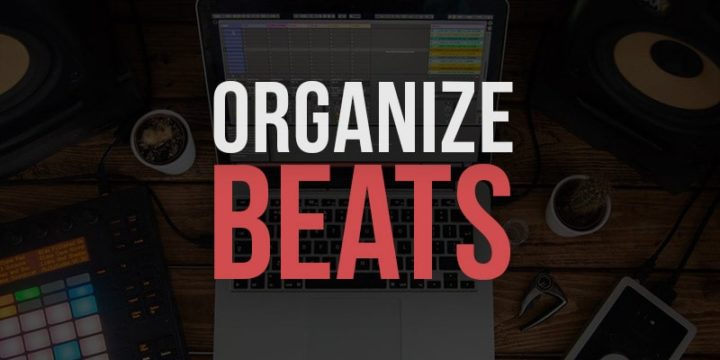If you are a music producer who creates a lot of beats, it can be hard to stay organized. So here are 5 tips on how to organize beats on your computer.

Related: 8 Free Sample Managers
How to Organize Beats
1. Color Code Your Files
Color coding your beats is a great way to organize them.
Mac Users: If you are using a Mac computer, the system already offers you a tag system that allows you to change the name of the tags.
Windows Users: If you’re on a Windows computer, there are dozens of free alternatives, such as Folder Marker Free.
2. Use a Folder for Each Beat
This one may sound obvious, but we all know that situation where we have hundreds of bounces, stems, and project files all in the same folder and it’s impossible to find anything.
To avoid that, make sure you create a new folder for each beat, containing everything related to it.
3. Name Your Files Correctly
When we’re in a hurry to start making another beat, we may find ourselves randomly naming project and audio files; So you should try to make it a habit to name your files effectively by creating a standard naming system.
For instance, you could input the BPM and key of the beat right before or after its name, so your computer does the rest of the work and organizes them by any aspects you want.
Related: 5 Beat Naming Tips to Sell More Beats Online
4. Make a Document to Catalog Beats
It’s a great practice to have a text document or a spreadsheet to catalog and have control of your beats. You can even link directly to your beat files from your document so it makes your life easier.
Make sure you include information to help identify the beats like tags, BPM, moods, and genres. So for instance, if a singer or rapper asks you for something very specific, let’s say an 80’s type of beat at 108 BPM, you can easily find it.
5. Always Backup Your Beats
Last but not least, if you are not regularly backing up your beats, you should start doing so as soon as possible.
One backup is generally not enough, so make sure you have two or more.
Related: External Hard Drives
Preferably having at least one backup with a cloud service so you don’t lose your files in case of any hard drive problems.
We like to use Dropbox to back up our files.
Conclusion on Organizing Beats
Use the color code feature to find your beats easily and quickly.
Create a folder for each beat containing everything related to it, so you don’t have to search your whole system later.
It’s a great idea to have a standard naming system for your files. It may contain information such as BPM and key.
Create a spreadsheet or a text document to catalog your files. Use tags such as BPM, key, moods, and genre.
Last but not least, always remember to backup not only your beats but all your important files.
How do you organize your beats?
Please tell us in the comments section below!





I Classify everything in Categories ..
R&B – Pop – Hip Hop – Sampled – Work in Progress – Need To Be Mixed & Complete
I store them on my 4mb floppy disks
I sequence and sample in maschine, then mix and master and do more tracking in Logic.
In folder in protool’s
dance hall
Hip Hop
West coast rap
Rock etc….
in the process of archiving 10 years of work at the studio I work at. Really could use some pointers. Trying to archive 10 TB via FTP
I find drums, usually I’ll take a kick hi hat & snare from random drum breaks, than eq & boost them up, maybe add effects/reverb. Than layer the drums with whatever fits. Find a sample, proceed to chop and glue. add percussion, create an intro, breakdown/hook(whichever the beat calls for) and than look for sounds to go over the loops Ive created. I like using vocal samples from movies/clips/records to give the track a certain vibe. check out my instrumental album! http://www.medl4.bandcamp.com peace!
2tb Hard drive which i run all my track outs to. Also i think everyone should us Icloud (Mac user only) its free and a easy way to have beats on standby for download
First by month and year, then by general vibe. Then always backup the files (external hard drive.)
i have it organize by month, then bpm, then name. I have a Excel document that gives a layout of each track. For example: one song might have a intro, hook, 18 bar verse, hook, bridge, 18 verse, hook.
I have my most recent tracks spread in ProTools on a Mac computer. Everything is backed up on an external Hard Drive. I am interested in learning about cloud storage for several terabytes of material. I also have tracks from my Motif on a SmartMedia Card…